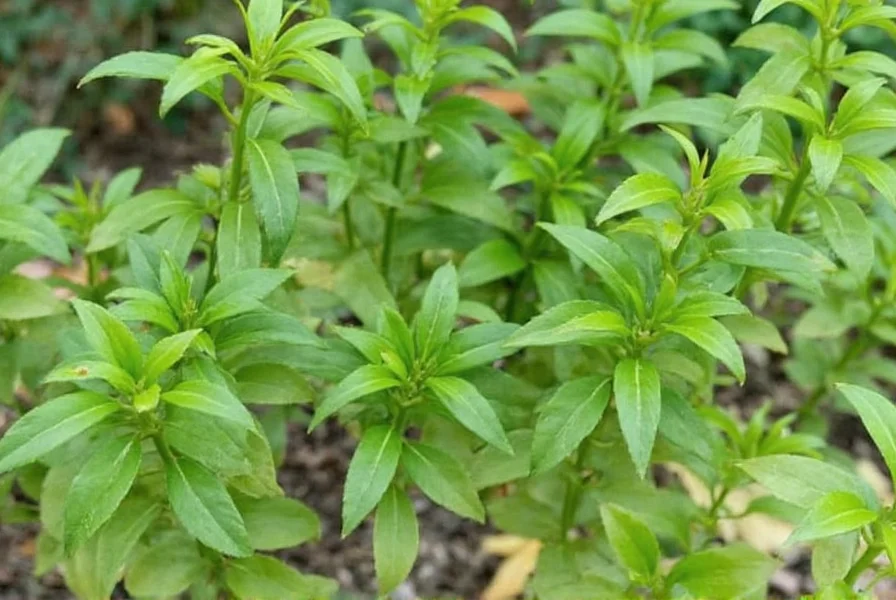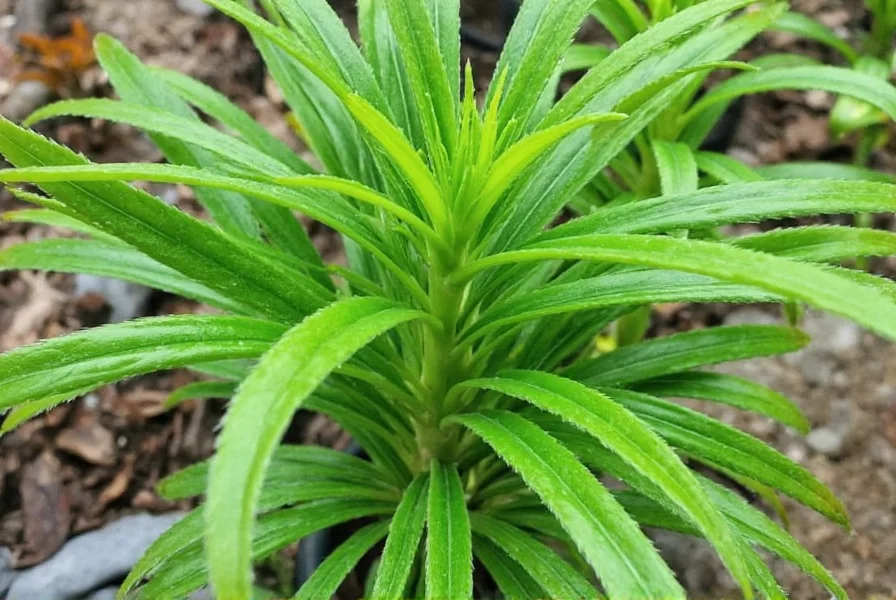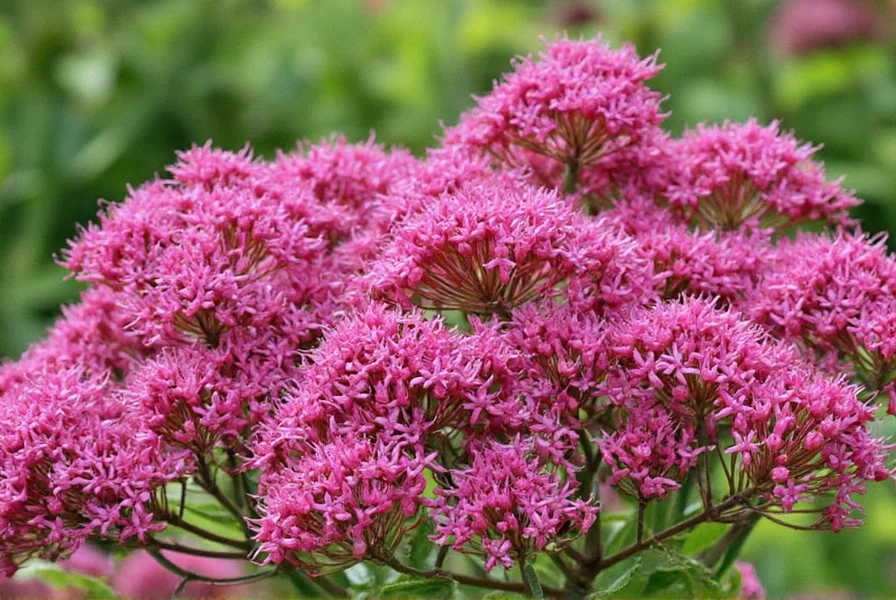Anise plant cultivation has spanned centuries, with historical records showing its use in ancient Egyptian, Greek, and Roman civilizations. This versatile herb continues to be prized in modern gardens and kitchens for its aromatic seeds and foliage. Understanding how to properly identify, grow, and utilize this plant separates casual gardeners from those who truly harness its potential.
Botanical Characteristics and Identification
Anise plant (Pimpinella anisum) belongs to the same family as carrots, parsley, and dill. Its distinctive features include:
- Height: Grows 12-24 inches tall with a single, branching stem
- Leaves: Finely divided, feathery foliage resembling dill
- Flowers: Small white flowers arranged in umbrella-shaped clusters (umbels)
- Seeds: Oval, grayish-brown seeds with a sweet, licorice-like aroma
- Root system: Taproot that doesn't transplant well once established
Proper anise plant identification prevents confusion with similar species. Many gardeners mistakenly refer to star anise (Illicium verum) as "anise plant," but these are completely different plants. Star anise grows on an evergreen tree and produces star-shaped fruit pods, while true anise is an annual herb producing small, crescent-shaped seeds.
| Plant | Scientific Name | Plant Type | Key Characteristics |
|---|---|---|---|
| Anise | Pimpinella anisum | Annual herb | Feathery leaves, small white flowers, crescent-shaped seeds |
| Star Anise | Illicium verum | Evergreen tree | Star-shaped fruit pods, stronger flavor |
| Fennel | Foeniculum vulgare | Perennial herb | Yellow flowers, bulbous base, similar but milder flavor |
Optimal Growing Conditions for Anise Plant
Successful anise plant cultivation requires specific environmental conditions. Understanding how to grow anise plant begins with soil preparation and climate considerations.
Anise thrives in full sun exposure with at least 6-8 hours of direct sunlight daily. The plant prefers well-draining, loamy soil with a slightly alkaline pH between 6.0 and 7.0. Heavy clay soils cause root rot, while sandy soils may require additional organic matter to retain moisture.
Temperature plays a crucial role in anise plant development. The ideal growing temperature ranges from 60-75°F (15-24°C). Anise cannot tolerate frost, so gardeners in cooler climates should start seeds indoors 4-6 weeks before the last expected frost date. The plant requires a long, warm growing season of approximately 120 days to produce mature seeds.
Planting and Care Instructions
Direct seeding works best for anise plant care instructions since the taproot dislikes disturbance. Follow these steps for successful cultivation:
- Prepare soil by incorporating 2-3 inches of compost
- Sow seeds 1/4 inch deep after soil reaches at least 60°F
- Space seeds 6-8 inches apart in rows 18-24 inches apart
- Water gently but consistently until germination (10-14 days)
- Thin seedlings to 6 inches apart once they reach 2 inches tall
Watering requirements change throughout the growing season. During establishment, keep soil consistently moist but not soggy. As plants mature, reduce watering frequency but increase depth to encourage deep root growth. Avoid overhead watering to prevent fungal diseases.
Weed control proves essential for healthy anise plant development. Hand-pull weeds carefully to avoid disturbing the shallow root system. Mulching with straw or shredded leaves helps suppress weeds while maintaining consistent soil moisture.
Harvesting Techniques and Timing
Mastering anise plant harvesting tips ensures maximum flavor and yield. The timing of harvest significantly impacts seed quality and flavor intensity.
For leaf harvest, begin when plants reach 6-8 inches tall. Morning harvesting, after dew dries but before midday heat, preserves essential oils. Use clean scissors to cut outer leaves, allowing the plant to continue growing.
Seed harvesting requires precise timing. Watch for the seed heads to turn from green to gray-brown. Harvest when 70-80% of seeds have changed color but before they begin to drop. Cut the entire seed head and place it in a paper bag to finish drying indoors, away from direct sunlight.
Proper drying techniques preserve anise's volatile oils. Spread seeds in a single layer on a mesh screen in a warm, dark, well-ventilated area. Stir daily until completely dry (typically 1-2 weeks). Store dried seeds in airtight containers away from light and heat.
Culinary Applications of Anise Plant
The culinary uses of anise plant extend far beyond simple flavoring. Professional chefs and home cooks alike value its distinctive taste profile in both sweet and savory applications.
Anise seeds work particularly well in baked goods where their flavor intensifies during cooking. Traditional recipes featuring anise include Italian pizzelle, German springerle, and Mexican bizcocho cookies. The seeds pair beautifully with citrus flavors, enhancing lemon and orange desserts.
In savory cooking, anise plant complements tomato-based sauces, stews, and braises. Many Mediterranean and Middle Eastern cuisines incorporate ground anise seed into spice blends for meats and vegetables. Try adding a pinch to your next batch of tomato sauce or roasted root vegetables for a subtle flavor enhancement.
Fresh anise leaves serve as an attractive garnish with a milder flavor than the seeds. They work well in salads, egg dishes, and seafood preparations. The feathery foliage makes an attractive border in edible landscaping.
Evidence-Based Medicinal Properties
Traditional medicine systems have utilized anise plant for centuries, and modern research supports several therapeutic applications. Understanding the medicinal properties of anise helps separate evidence-based uses from folklore.
Scientific studies confirm anise's effectiveness as a digestive aid. The compound anethole relaxes gastrointestinal muscles, reducing bloating and gas. A 2020 review in the Journal of Ethnopharmacology noted anise's traditional use for treating indigestion and its scientifically validated carminative properties.
Research also supports anise's role in respiratory health. The plant's expectorant properties help loosen mucus in coughs and colds. Many natural cough syrups incorporate anise oil for its soothing effects on irritated throats.
Women's health represents another area of research interest. Some studies suggest anise may help regulate menstrual cycles and reduce menopausal symptoms, though more research is needed in this area. Always consult with a healthcare provider before using anise for medicinal purposes, especially if pregnant or taking medications.
Common Growing Challenges and Solutions
Even experienced gardeners encounter obstacles when growing anise in home garden settings. Understanding these challenges helps prevent common pitfalls.
Failure to germinate ranks among the most frequent problems. Anise seeds have a short viability period, so use fresh seeds each season. Older seeds show significantly reduced germination rates. Soaking seeds in warm water for 24 hours before planting can improve germination success.
Poor seed production often results from inadequate pollination or improper harvesting timing. Anise relies on insect pollinators, so avoid pesticides during flowering. Harvest seeds before they become fully mature and drop from the plant.
Fungal diseases like powdery mildew can affect anise plants in humid conditions. Prevent these issues by ensuring proper air circulation through appropriate spacing and avoiding overhead watering. Remove affected leaves immediately to prevent spread.

Preservation and Storage Methods
Proper preservation maintains the flavor and potency of anise plant components. Different storage methods work best for seeds versus leaves.
For long-term seed storage, keep dried anise seeds in airtight glass containers away from light and heat. Properly stored seeds maintain their flavor for 2-3 years. Refrigeration extends shelf life but requires careful moisture control to prevent condensation.
Fresh leaves have a shorter shelf life but can be preserved through freezing. Chop leaves finely, place in ice cube trays, cover with water or olive oil, and freeze. These herb cubes work well for adding flavor to soups and stews.
Drying remains the most effective preservation method for anise seeds. Avoid oven drying, which can degrade volatile oils. Instead, use a food dehydrator on the lowest setting or air-dry in a dark, well-ventilated space. Test for complete dryness by bending a seed—it should snap rather than bend.

Conclusion
The anise plant offers gardeners and cooks a versatile herb with distinctive flavor and numerous applications. By understanding proper identification, cultivation techniques, and usage methods, you can successfully incorporate this ancient herb into your garden and kitchen. Whether you're growing anise for culinary experimentation, medicinal purposes, or simply to expand your herb garden diversity, attention to its specific growing requirements ensures rewarding results. The key to maximizing anise's potential lies in proper harvesting timing, careful storage, and creative culinary applications that showcase its unique flavor profile.
Frequently Asked Questions
Can I grow anise plant in containers?
Yes, you can successfully grow anise in containers with proper considerations. Choose a pot at least 12 inches deep to accommodate the taproot, and use a high-quality potting mix with excellent drainage. Container-grown anise requires more frequent watering than garden-planted specimens, as pots dry out faster. Place the container in full sun and rotate regularly for even growth. Remember that anise doesn't transplant well, so start seeds directly in their final container.
How do I differentiate anise from fennel in my garden?
While anise and fennel appear similar, several key differences help with identification. Anise has smaller, more delicate leaves compared to fennel's feathery foliage. Fennel develops a bulbous base at the stem, while anise grows on a single slender stem without swelling. The flowers differ slightly—fennel flowers tend to be more yellow, while anise flowers are pure white. Most reliably, crush a leaf from each plant: anise has a sweeter, more intense licorice flavor, while fennel offers a milder, slightly grassier taste.
When is the best time to harvest anise seeds?
Harvest anise seeds when the seed heads turn from green to gray-brown, typically 120 days after planting. The optimal time is when approximately 70-80% of seeds have changed color but before they begin to drop from the plant. Morning harvest after the dew has dried ensures the highest essential oil content. Cut the entire seed head and place it in a paper bag to finish drying indoors, away from direct sunlight, for 1-2 weeks until completely dry.
Can I use anise plant if I have a ragweed allergy?
If you have a ragweed allergy, exercise caution with anise plant as it belongs to the same Apiaceae family as some allergenic plants. While not directly related to ragweed, cross-reactivity can occur in sensitive individuals. Start with small amounts to test your reaction, particularly when consuming anise seeds or oil. Consult with an allergist before using anise medicinally if you have known plant allergies. Many people with ragweed allergies tolerate anise without issues, but individual reactions vary.
How does anise plant benefit companion planting?
Anise plant serves as an excellent companion plant in the garden due to its pest-repelling properties. The strong scent deters aphids, kInstruction ants, andDXVECTOR











 浙公网安备
33010002000092号
浙公网安备
33010002000092号 浙B2-20120091-4
浙B2-20120091-4